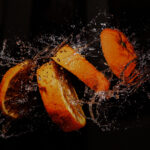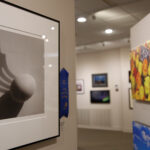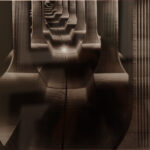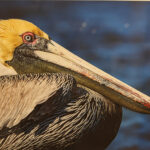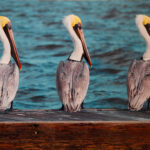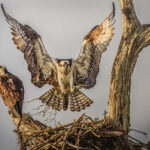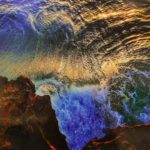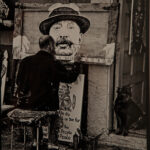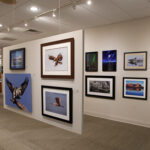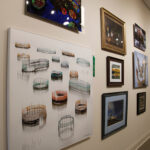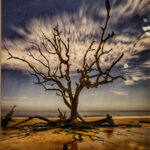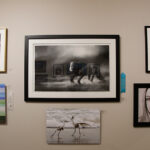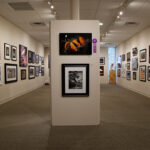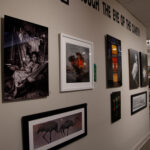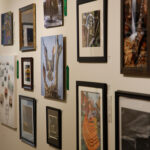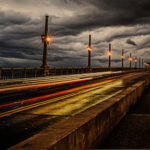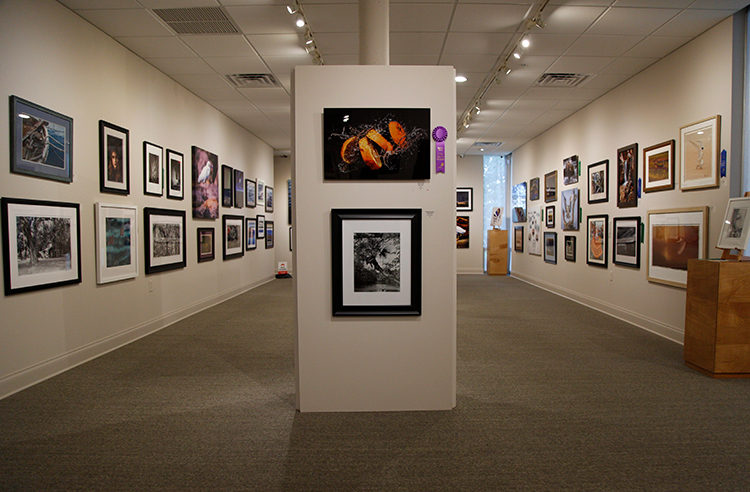
Skipped last year, the A.E. Backus Museum’s competitive “Through the Eye of the Camera” exhibition is back and better than ever. The exhibit is on view through June 18.
Executive director J. Marshall Adams explains that “in 2020 we were never able to issue the April call to artists due to the pandemic. With no physical exhibition possible, we pivoted to a social media project called #EyeAmCreative.”
That online project made the best of a bad situation, but Adams is glad the museum is once again able to present Eye of the Camera at the Fort Pierce museum’s galleries. “This year’s competition is a triumphant return,” he says.
Photographers flocked to the call for entry. Submissions numbered 179 works by 77 photographers; 103 pieces were selected for the show.
This year’s jury included Zora Carrier, Ph.D., executive director of the Florida Museum of Photographic Arts in Tampa; Mike Hinkle of Krahinkle Photography Group in Fort Pierce; and Professor Jayanti Seiler of the Southeast Center for Photographic Studies at Daytona State College.
The jury not only selected the entries that comprise the exhibition, but also awarded ribbons to the works they deemed outstanding in the categories of Animals, Flora & Landscape, People/Portrait and Open, for photos that did not fit into the other categories.
Because photographers who work with film and chemically develop their prints are a vanishing breed, most of the images on display have been digitally captured, edited and printed. You can expect to see prints in a range of sizes on a variety of substrates, including aluminum sheets, plastic, acetate, canvas and even photo print paper.
In addition to Best of Show, Director’s Choice, People’s Choice, and First, Second and Third Awards in each of the four categories, there are two new awards: Best Black & White Photography, and Best Film/Traditional RAW Photography.
The latter considers the use of RAW, or unprocessed digital image data. Many cameras have a RAW setting that allows the photographer to capture vastly more digital information per exposure than the camera’s standard JPEG format provides. RAW files produce images that can withstand greater enlargement without losing detail; the format is the choice of an increasing number of fine art photographers.
The award for Best Black and White Photography went to Joe Campanellie of Palm Coast for “Running Free,” a picture of a dark horse with a white blaze galloping through a shallow expanse of water. The image’s ephemeral mood is enhanced by the torn deckled edges of the paper on which it is printed.
Campanellie says that he photographed the horse on a photo club outing to an Ocala ranch that breeds this type of horse, which only recently has been recognized with its own registry.
Called a “Gypsy Vanner,” the horse gets its name from the Romani people in England and Ireland who bred them to pull their caravan wagons. With its stout body and feathered legs, the horse is a smaller version of its giant cousin, the Clydesdale.
Campanellie also won First Place in the Animals category for “The Gift,” a color print of a male least tern offering his mate a small fish. Campanellie says that hours of patient waiting went into the making of that shot. He and wife Mary Jean enjoyed a 30-year career as portrait photographers in Maryland. Mary Jean is now a portrait painter, while Joe’s specialty is avian photography. In addition to his least terns, the exhibition boasts his “Misty Morning Flight,” featuring a flying roseate spoonbill, and “Bad to the Bone,” a regal portrait of an African vulture.
Best Film/Traditional RAW Photograph was won by Jim Swallow of St. Petersburg. His “Golden Pod Series #7” is a picture of various dried pods and seeds symmetrically arranged on a flat surface. The large pod at the center of the composition is vaguely anatomical. You might see it as a heart from which curling veins spring or, playing on the fertile symbolism of the pod and seed, a uterus with fallopian tubes.
Printed against a background of shining gold metal leaf, the imagery has the hieratical look of a precious icon. Fancy’s flight could interpret it as an offering to St. Anthony, patron saint of women expecting to expect. No matter where Swallow’s image takes your imagination, its creative use of RAW imagery is compelling.
Swallow, a professional photographer for 40 years, says he only works from RAW files. Of his award-winning photo, he says he digitally printed the tack-sharp image onto a clear acetate sheet before applying gold metal leaf to the substrate’s reverse. While the first part of his process was entirely digital, the finishing touch of applying the leaf was done the old-fashioned way, one square at a time, by hand.
The color of gold made Swallow’s image stand out for the judges, but for Manuel Carela of Port St. Lucie, it was orange. He won Best of Show for “Orange Splash,” an arrested-motion depiction of four slices of the titular citrus practically leaping amidst a sparkling web of water.
In the Open category, David Bence of Vero Beach received First Place for his black and white photo “Fork and Egg #2,” and second place in the same category for his black and white “Roosevelt Bridge #1.” That one, a disorienting view of the bridge’s understructure, was achieved by exhibiting the image upside down.
First Place in Flora and Landscape went to Susan Pantuso for “The Way,” a view of what appears to be a red stone canyon à la Eliot Porter, but is really a modest arrangement of rocks; such are the tricks of scale the camera can play. The photograph’s environment features a waterfall and a ladderlike structure of iron bars affixed to a limb of driftwood. Placed diagonally in the composition, the rude ladder leads the eye in a vertiginous rush from the immediate foreground to the top of a precariously balanced boulder.
Pantuso has four other photos in the show, including two black and white Clyde Butcheresque scenes, “The Flooded Forest” and “The Tree Hugger.” The latter is a majestic portrait of a spreading oak.
First Place in People/Portraiture went to Mark Smith of Port St. Lucie. His photograph, “The Relic,” features the close-up face of a boy wearing a steel army helmet that is blistered with rust; the boy’s face has been painted to mimic the helmet’s patina. The effect is one of a freshly unearthed Greek god, whose grimy bronze visage sports a pair of sparkling glass eyes.
Smith has a total of four pieces in the show. His “Heart and Soul,” an ambitious, scary, yet humorous portrait of a zombie would have been my pick for the People/Portraiture blue ribbon.
Besides those of the living dead, there were relatively few portraits in the show.
Two small black and white images stood out from the rest for the quality of their tonal range and the refreshing directness of their portrayals. “Grandfather (Caught Napping)” by Cliff Stokes of Fort Pierce depicts a man with a white mustache and two tangled thickets of eyebrow dozing in the shade of his straw fedora. With eyes half closed, the subject appears to acknowledge the camera’s presence while not giving a fig about it.
Alford Greves of Port St. Lucie is represented by “In a Pensive Mood,” a warm-blooded representation of a smartly dressed woman, whose pose comfortably curls within the close-cropped borders of the composition. Slightly smiling, she regards the camera’s gaze with amused tolerance.
The Eye of the Camera was especially focused on birds this year, with more egret, pelican and osprey photos than you can shake a stick at. Marshall Adams chose to award his Director’s Choice to one of these, a pelican close-up titled “Easy Breezy” by Chris Schumacher of Vero Beach.
Other notable birds in the show include a trio of pelicans in “The Landing” by Christopher Spain of Jensen Beach. “Osprey Wings” by Laura Garza of Orlando features its subject with wings flared for landing, and “Fishing Buddies” by Hilda Champion of Naples depicts a cormorant perched on the hand of a traditionally dressed Chinese fisherman.
Photos by Kaila Jones

